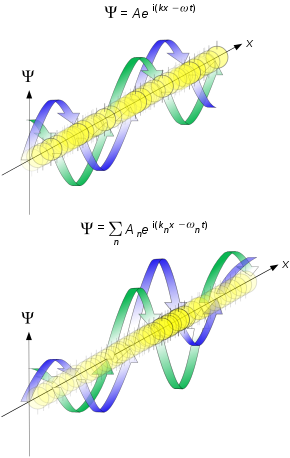Energy is measured discrete pieces called quanta. So it can't be divided into smaller pieces than that quanta. The smallest piece of energy that can exist is equal to plank's constant and is measured in joules.
Kinetic, potential, mechanical, mechanicalwave, chemical, electric, magnetic, radiant, nuclear, ionization, elastic, gravitational, thermal, and heat energy can also be measured in joules. Mass--matter, antimatter, and dark matter can be measured in joules and is also energy.
For quite a while, scientists thought that matter and energy were separate phenomena. It was Einstein that first proposed that matter was energy. After several experiments that scientists performed and the invention of the atomic bomb, it was accepted as true that matter is energy.
So what else, other than what I mentioned above, is there in the universe? There's nothing else except space, which is just unfilled geometry. So energy is everything. Anything that is something is just energy.
Structure and form of energy.
Einsteins theory says that E=mc2; where, E is energy, m is the mass of the object, and c is the speed of light. This is called the mass-energy equivalence. This has been empirically proven by the invention of the atomic bomb and nuclear energy plants and by quite a few other experiments. Furthermore, energy cannot be created or destroyed. Energy can only change form. This means the amount of energy in the universe is fixed. It never becomes more or less than the original energy. This is interesting because this also implies that the universe had a beginning and according to my other theory--there's no such thing as a straight line--it will have an end also.
Energy as waves
So now that we know that everything is energy, including mass. What structure does energy possess? A long time ago scientists thought that mass only exibited particle behavior--that it was hard and solid. Certainly, at first glance and by feel mass seems to be solid. But when it is examined more thoroughly, it turns out that it isn't solid at all. There are a lot of spaces in it and it vibrates.
Several experiments have been carried out by scientist to find out whether certain things such as light, electrons, protons, atoms, etc. exhibit wave or particle behavior. One such experiment is the double-slit experiment. In this experiment, interference patterns indicate whether or not there is wave or particle behavior. This has been used to examine electrons and light. Experiments like this have indicated that light and electrons have both wave and particle characteristics. That is why the idea of wave-particle duality emerged.
| Photon |
Scientists used to think that matter, especially atoms, and, even more so, large molecules were still made up of "solid"particles which did not exhibit wave behavior. But that changed, in 1924 a scientist by the name of Louis de Broglie proposed that matter also exhibited wave behavior.
Matter waves were first experimentally confirmed to occur in the Davisson-Germer experiment for electrons, and the de Broglie's hypothesis that even matter was composed of waves was confirmed for other elementary particles. Furthermore, neutral atoms and even molecules have been shown to be wave-like. So, as it turns out, everything is a wave in some way or form, and everything is energy-- energy waves.

So what is an "energy wave?". Well, to put it simply it is a photon. Furthermore, in this article, I am proposing that there is no wave-particle duality and that all energy is waves and not particles. The particle behavior of matter is only due to the resonance of the energy waves, thus making them act like particles with solid-like characteristics when they really aren't. Furthermore, I state that the base form of all energy is the photon-an energy wave. Thus, everything in the universe is light; light transformed to one form or another. we can calculate the total energy of anything by summing up the photon equivalence frequencies of it's component parts times the plank constant times the number of components. The general equation for this is:
E=hw
Where E is energy, h the planck constant, w the angular frequency. This of course is a general equation. For a macroscopic body it would be the superposition of all parts and forms of energy with respect to h and w. And this of course is the frequency of the photons which make up particles, i.e., an electron in its ground state is made up of a gamma ray photon. In this case, it would be the frequency of the gamma ray times the planck constant. Every particle can be converted to a photon equivalence. Everything has a frequency. Thus, the equation above works for all things.
We must also remember that the law of opposites will usually require more than just the electron to produce such gamma rays and a feminine and masculine parts would be necessary to carry out such conversions. i.e., an electron and positron would be required (feminine and masculine) and two gamma rays would be produced (according to the rule of opposites).
We must also remember that the law of opposites will usually require more than just the electron to produce such gamma rays and a feminine and masculine parts would be necessary to carry out such conversions. i.e., an electron and positron would be required (feminine and masculine) and two gamma rays would be produced (according to the rule of opposites).
Here is a video where sound waves are used to vibrate sand and other types of "particles". When they vibrate they start to take up their own particular structure and dynamics. It shows how it is quite possible that the universe could work from energy wave phenomena.
© C.E.C. Hastings
All rights reserved


